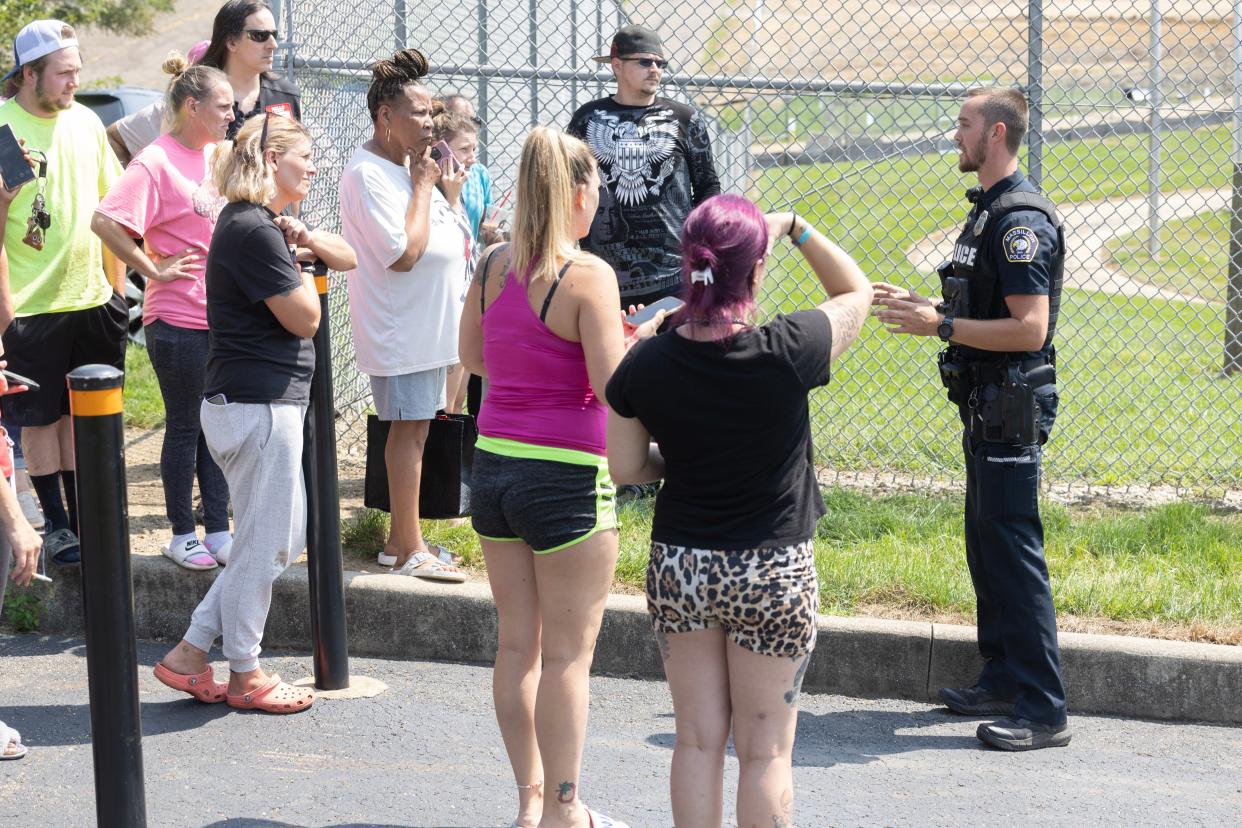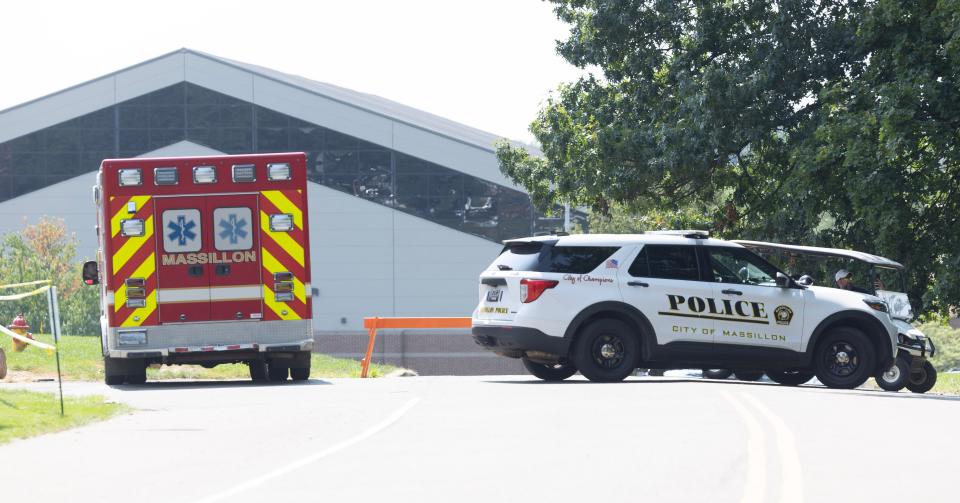'There will be consequences': Students making threats will face prosecution

Stark County Sheriff George T. Maier wants those students who make threats against schools to know that officials are ready and they will get caught.
"Beware, we are coming for you," Maier said. "There will be consequences."
Within days of the school year beginning, authorities had to deal with separate threats at Washington High in Massillon, Northwest High in Canal Fulton and McKinley High in Canton. In all three cases, teens were identified quickly and charged.
"They do happen and we are challenged with dealing with them and sorting them out," Maier said.
There's no telling why adolescents think they can get away with making threats, the sheriff said. He believes many of those involved often repeat behavior they see on social media.
"Kids go on and see other kids doing certain things," he said. "They feel like it's no big deal and they won't get caught."
But most likely they will, he said.

What is swatting and why is it dangerous?
States are toughening laws against students who are involved in making threats.
Kentucky lawmakers passed a student discipline law that will expel a student for up to 12 months if they make a violent threat. Lawmakers in Tennessee have a similar measure that sends anyone who makes a threat of mass violence — a threat against two or more people — to an alternative learning center for 180 days. And Ohio lawmakers are taking threats more seriously, with a new anti-swatting law that took effect in April.
Under the new Ohio law, anyone who reports false or misleading information to a law enforcement agency, emergency service provider or public safety can be found guilty of a fourth-degree felony.
Swatting was at the center of an incident at Washington High School on Aug. 22. A student, using a swatting app, called in a bomb threat prompting the evacuation of the school and raising fears in parents. The pranks, which are becoming more frequent, aim to bring a large number of armed law enforcement officers to an address.
The practice started among online gamers who became upset with other players, Maier said.
The act has been wreaking havoc on school campuses, including colleges. In less than a single week in April, universities such as Clemson, Florida, Boston, Harvard, Cornell, Pittsburgh, Rutgers and Oklahoma, were targeted by swatters, the Associated Press reported.
It worries Maier, who said he wants to ensure students and staff that local schools are safe.
"It's an emerging problem for us in our schools and in our community," he said. "It is a serious prank where people have been killed and it's a criminal offense."
Cooperation among agencies at the local, state and federal level provides a number of resources that allow suspects to be quickly identified, Maier said.
"I think we have more resources. We are more efficient and highly trained," the sheriff said. "We have learned a lot along the way. We continue to train and educate on how to best respond and appropriately handle the case."
School shootings: Schools across US hit with dozens of false shooting, bomb threats. Experts say it's a 'cruel hoax'
How to determine if a kid is joking or it's a credible threat
Joe Chaddock, superintendent of Stark County Educational Service Center, said safety and security are most important but school officials and law enforcement agencies have to find a balance between a kid joking with his friends in the cafeteria and a credible threat.
"We chase every (threat) down like they are real," he said. "Our administrators are highly trained in threat assessment and working with law enforcement to triage a threat. How credible is the threat? Is this kid goofing off or is it real?"
Chaddock and Maier agreed that it is important to show those involved in making threats that there are consequences but both want to ensure a stupid act by an adolescent doesn't set them on a path that leads to bad decisions and incarceration.
Students involved in bomb threats at Massillon, and threats of violence at Northwest High School and McKinley High School are facing felony charges.
"Kids make mistakes," Chaddock said. "But how do we make them productive citizens and not make bad choices and end up in jail? Young kids make mistakes. Are we going to ruin a person's life without vetting it completely? We have to find the balance, which is tough since we take this type of thing very seriously.
"We have to continue to talk to our kids about the importance of what they say and put in print," he added. "We have kids who are not mature enough and then we put a cellphone in their hand."
See something, say something
In all three incidents, students reportedly reached out to school administrators and law enforcement officials after they learned about the threats through social media or directly from the suspect.
"Our kids — and our parents — are doing such a phenomenal job communicating when issues arise and getting the resources they need," Chaddock said.
Students are doing a better job communicating what is going on, he said, especially when they know classmates are struggling and in need of help.
The state's anonymous reporting system also increases the number of students speaking up about what they see or hear.
Maier is excited to see kids speaking up. There is a change in culture over the last few years. Kids are often taught at a young age not to tattle but have gotten the message that they need to speak up.
"It takes courage to step up and say something when someone is in danger," the sheriff added. "The new message is you have a responsibility to yourself and the community to speak up when lives are in danger. Hats off to them."
In the past five to eight years, Chaddock said districts have stepped up their safety and security measures, as well as amped up their CARE teams and coordinated with many resources from Stark County Mental Health & Addiction Recovery, Early Childhood Resources, United Way, churches and businesses to provide assistance to students and their families.
"We are far from perfect but we're better. We are getting better," Chaddock said.
Reach Amy at 330-775-1135 or amy.knapp@indeonline.com.
This article originally appeared on The Independent: Stark County authorities dealing with school threats

